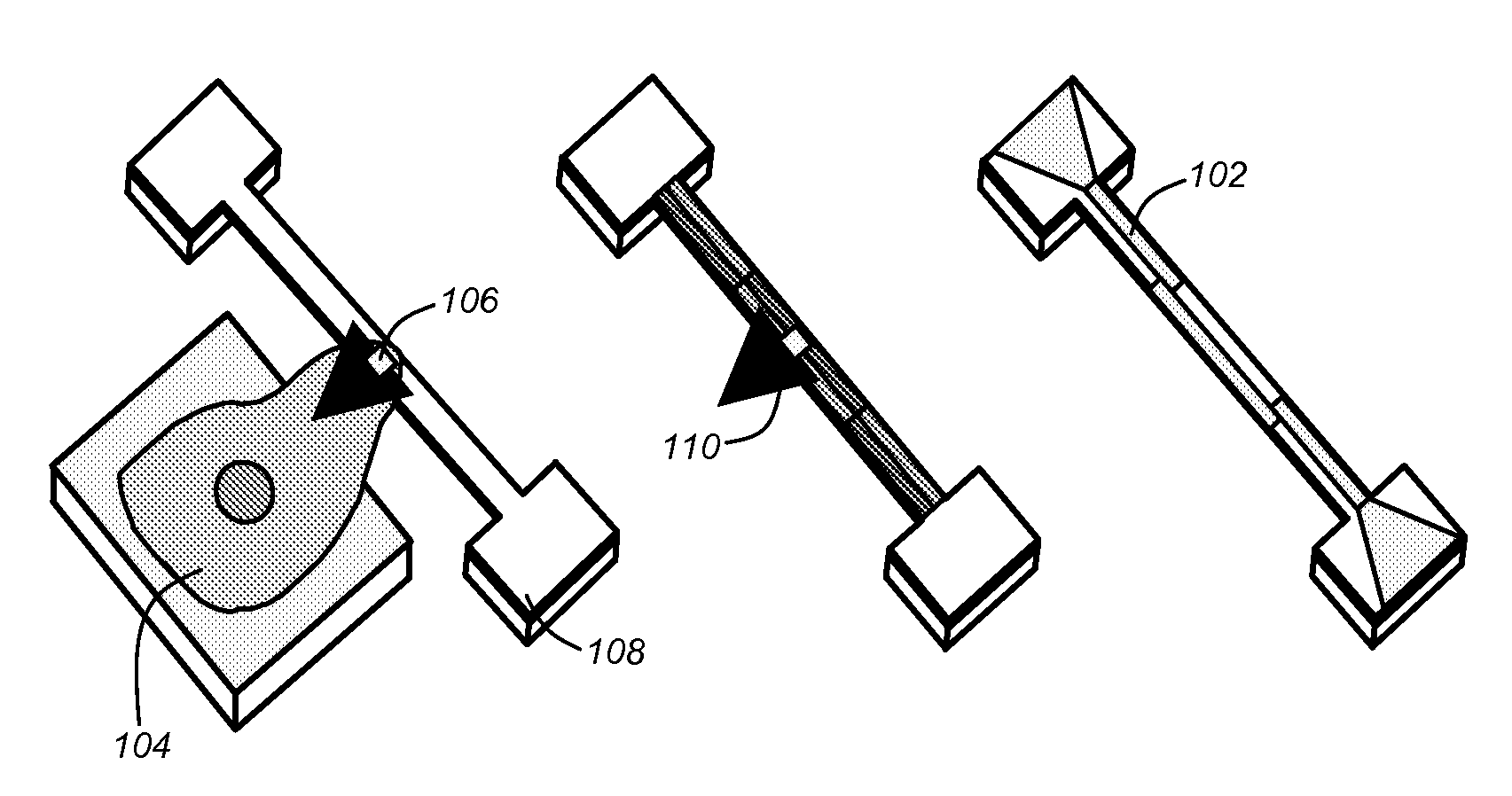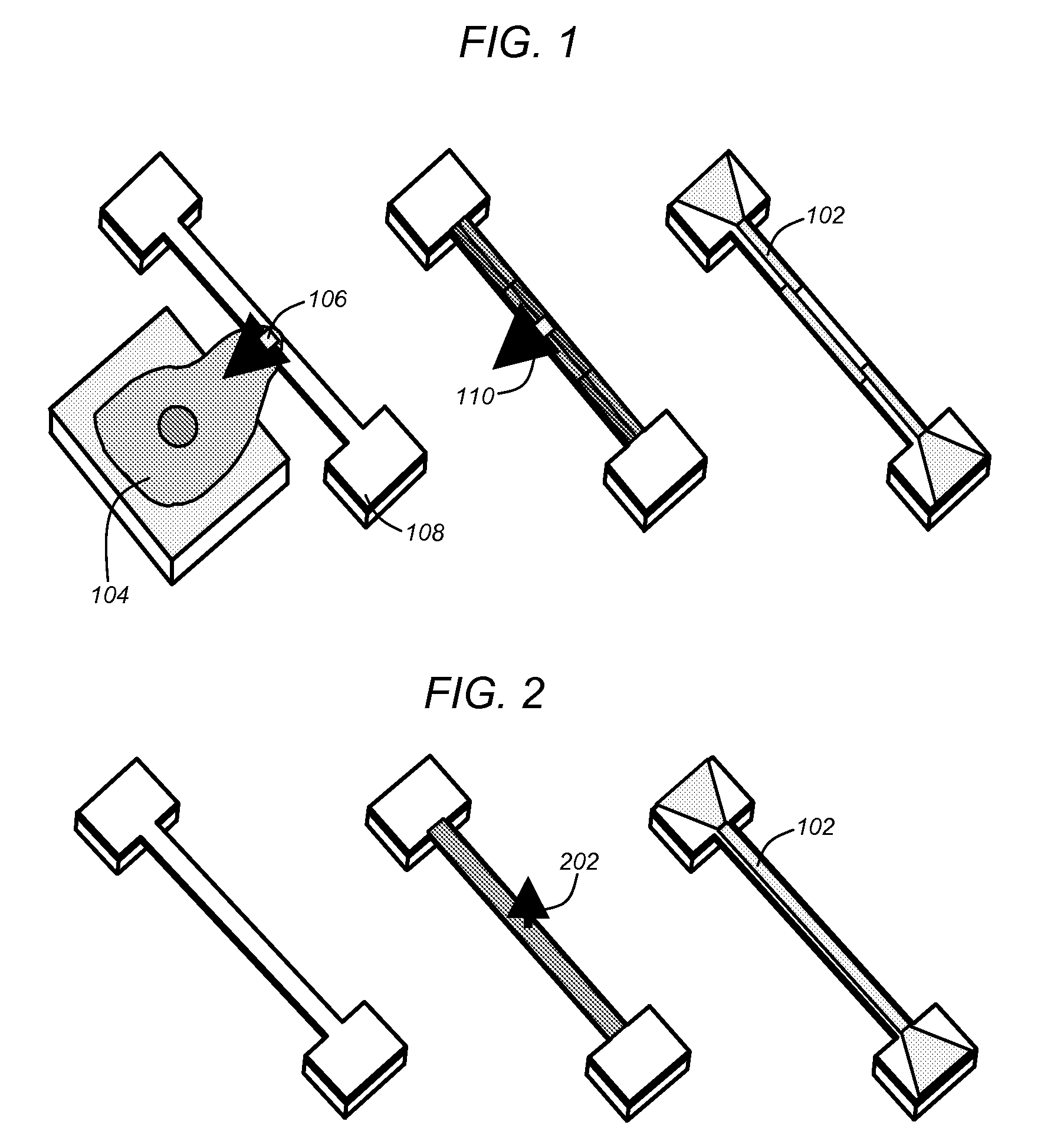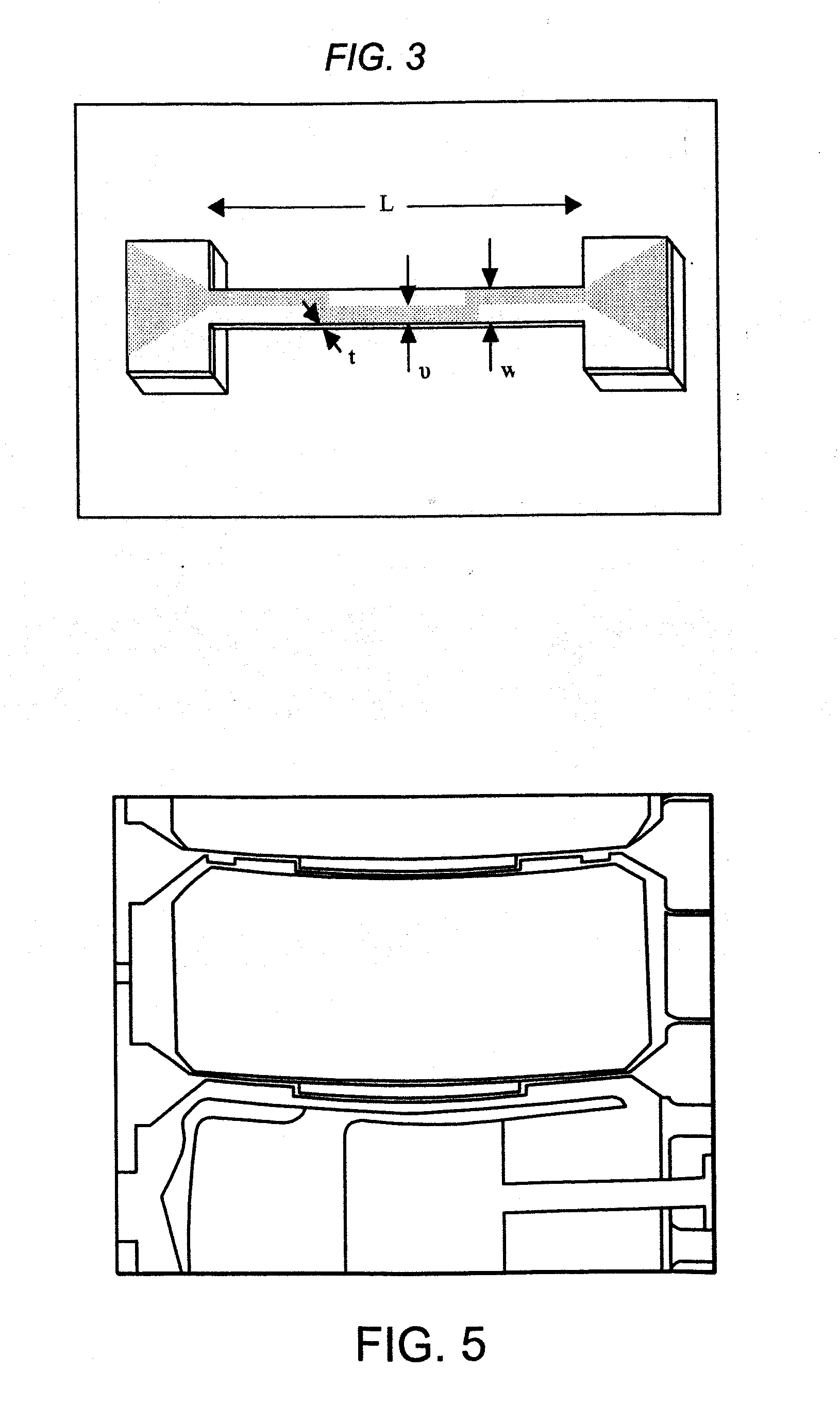Polymer nems for cell physiology and microfabricated cell positioning system for micro-biocalorimeter
a micro-biocalorimeter and cell technology, applied in the field of nanoscale electromechanical devices, can solve the problems of limiting the frequency achievable and the level of sensitivity attainable, and the standard approach used to make microelectromechanical systems (mems) cannot provide access to the nanoscale, so as to reduce the time and sample quantity, reduce the scale, and accelerate the parallel implementation of calorimetric measurement
- Summary
- Abstract
- Description
- Claims
- Application Information
AI Technical Summary
Benefits of technology
Problems solved by technology
Method used
Image
Examples
Embodiment Construction
[0049]In the following description, reference is made to the accompanying drawings which form a part hereof, and which is shown, by way of illustration, several embodiments of the present invention. It is understood that other embodiments may be utilized and structural changes may be made without departing from the scope of the present invention.
Overview—Microfluidic Embedded Polymer NEMs Force Sensor
[0050]As described above, prior art techniques have attempted to measure the forces exerted by biological samples (e.g., single cells). In this regard, adherence cells (i.e., cells that adhere or have adhering properties with respect to adjacent surfaces), may exert forces when diffused across a surface. Prior art mechanisms attempted to measure such forces primarily utilizing optical means. In this regard, prior art mechanisms were based on optical measurements of deflected substrates or members. For example, cells (e.g., monocyte or macrophage cells), may be placed superior to polydim...
PUM
| Property | Measurement | Unit |
|---|---|---|
| time-constant | aaaaa | aaaaa |
| frequency | aaaaa | aaaaa |
| widths | aaaaa | aaaaa |
Abstract
Description
Claims
Application Information
 Login to View More
Login to View More - R&D
- Intellectual Property
- Life Sciences
- Materials
- Tech Scout
- Unparalleled Data Quality
- Higher Quality Content
- 60% Fewer Hallucinations
Browse by: Latest US Patents, China's latest patents, Technical Efficacy Thesaurus, Application Domain, Technology Topic, Popular Technical Reports.
© 2025 PatSnap. All rights reserved.Legal|Privacy policy|Modern Slavery Act Transparency Statement|Sitemap|About US| Contact US: help@patsnap.com



